Does the thought of your treasured plants struggling due to inadequate humidity keep you up at night? Are you curious if a diffuser can be used as a plant humidifier?
Rest assured; you’re in good company! Numerous indoor plant enthusiasts encounter similar challenges while maintaining an ideal environment for their green companions.
So, can a diffuser be used as a humidifier for plants?
Yes, with some limitations a diffuser can be used as a substitute for a humidifier for plants. However, it isn’t ideal for plants which require higher humidity levels in order to grow.
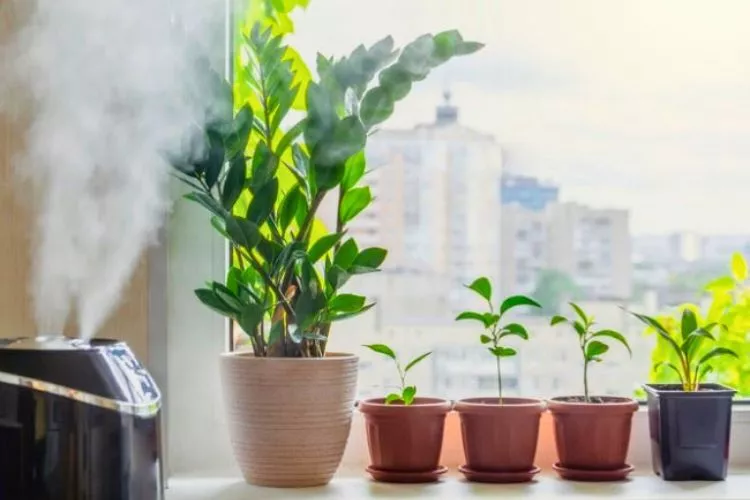
In this article, we’ll explore the world of diffusers and humidifiers, delve into their differences, and examine the effectiveness of using a diffuser as a humidifier for your plants.
Moreover, we’ll discuss the importance of humidity for plants and provide a brief overview of the article’s content. By the end of this read, you’ll have the know-how to foster a thriving indoor garden and keep your plants happy and healthy. So, sit back, relax, and join us as we unravel the possibilities of using a diffuser as a humidifier for your plants!
Table of Contents
Understanding the Difference Between Diffusers and Humidifiers
Before we dive into whether a diffuser can be used as a plant humidifier, it’s crucial to understand the key differences between these two devices.
This section will cover the definitions, types, and various aspects of diffusers and humidifiers that set them apart.
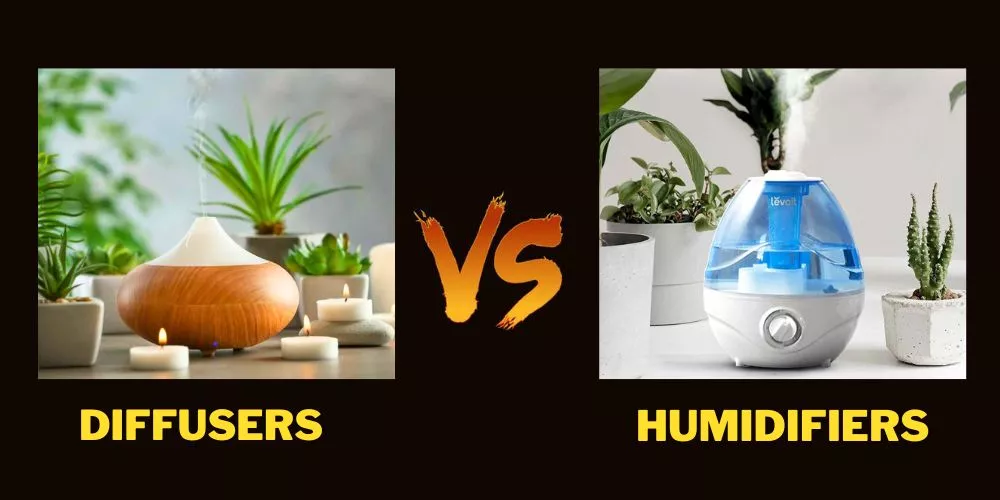
Definition of diffusers and humidifiers
Diffusers and humidifiers may appear similar initially, but they serve distinct purposes and operate differently.
Explanation of how diffusers and humidifiers work
- Diffusers: These devices are primarily designed to disperse essential oils into the air, often using ultrasonic vibrations or heat. They release a small amount of moisture into the air as a byproduct.
- Humidifiers: These appliances add moisture directly to the air by converting water into vapor, helping maintain an optimal humidity level. They are available in various types, such as ultrasonic, evaporative, and steam-based humidifiers.
Types of diffusers and humidifiers
- Diffusers: Ultrasonic diffusers, nebulizing diffusers, heat diffusers, and fan diffusers are the most common types available.
- Humidifiers: The market offers ultrasonic humidifiers, evaporative humidifiers, steam vaporizers, and impeller humidifiers.
Differences between diffusers and humidifiers
Several factors set diffusers and humidifiers apart, including humidity output, water usage, noise levels, and price range. Let’s have a look at them in a little more detail.
Humidity output
Humidifiers are specifically designed to increase the humidity level in a room, while diffusers primarily disperse essential oils and release a comparatively smaller amount of moisture.
Water usage
Humidifiers typically use a larger volume of water to maintain the desired humidity level, while diffusers use minimal water for dispersing essential oils.
Noise levels
When it comes to noise, ultrasonic diffusers and humidifiers generally produce less sound than other types. However, the noise output can differ based on each model’s design and features.
Price range
The cost of diffusers and humidifiers can span a broad range, influenced by their functionalities, size, and effectiveness.
On average, diffusers may range from $15 to $100, while humidifiers typically cost between $20 and $150. Remember that these price ranges may vary, and higher-end models could come at a premium.
Can a Diffuser be Used as a Humidifier for Plants?
After examining the key differences between diffusers and humidifiers, we’re ready to address the question: Can a diffuser be used as a humidifier for plants?
In brief, yes, it can, although there are certain limitations. A diffuser can offer a slight boost in humidity, which may be adequate for plants with lower humidity needs or confined spaces.
Nevertheless, it might not be as efficient as a dedicated humidifier, particularly for plants requiring higher humidity levels.
In this section, we will explore the pros and cons of employing a diffuser for this particular use, its effectiveness, and the appropriate techniques for implementation.
Pros and Cons of Using a Diffuser as a Humidifier
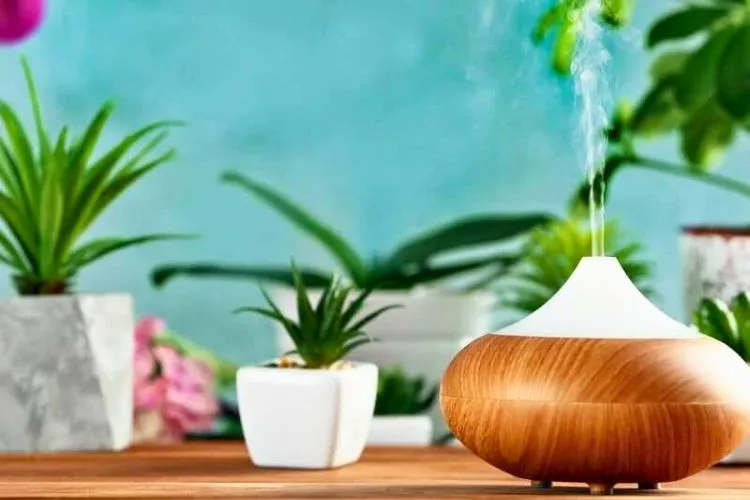
While a diffuser isn’t explicitly designed for humidification, it can still benefit your plants. However, it’s important to consider both the advantages and disadvantages of using a diffuser as a plant humidifier.
Advantages of using a diffuser as a humidifier for plants
- Contributes a degree of moisture to the air, benefiting small areas or particular plants with minimal humidity needs.
- Enables the utilization of essential oils containing antifungal properties, like tea tree or eucalyptus, assisting in safeguarding your plants from specific ailments.
- Functions silently, making it suitable for use in living spaces and bedrooms without causing a disturbance.
- Offers a pleasant aroma when used with essential oils, enhancing the ambiance of your indoor garden.
Disadvantages of using a diffuser as a humidifier for plants
- Limited capability to raise humidity levels, especially in spacious rooms or for plants necessitating higher humidity.
- Demands more frequent replenishment due to the smaller water container, which may be inconvenient for those with hectic schedules.
- It may not be as energy-efficient as dedicated humidifiers for long-term use.
- The essential oils used in diffusers may pose a risk to pets, as some can be toxic to certain animals.
Effectiveness of Diffusers in Humidifying Plants
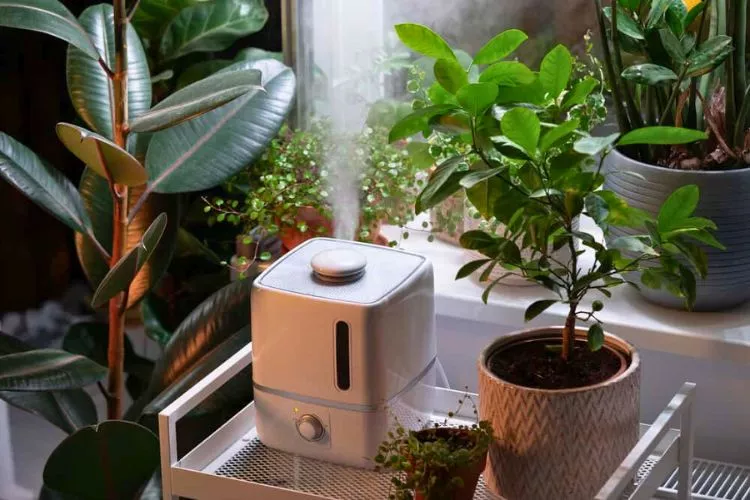
How diffusers add humidity to the air
Devices that scatter essential oils and water into the air are known as diffusers. These diffusers add a bit of dampness to their surroundings by producing a fine mist.
This can be advantageous for plants that don’t require much humidity or those in tight areas.
Even though it’s a subtle effect, it can be a worthwhile inclusion to a plant’s environment, particularly if a specialized humidifier isn’t accessible.
Types of diffusers that can be used as humidifiers for plants
Multiple diffuser types can be employed for plant humidification; however, their effectiveness can differ. Some prevalent diffuser categories include:
- Ultrasonic diffusers: These devices utilize ultrasonic vibrations to produce a fine mist of water and essential oils. They are generally quiet and effective, making them a favored option for enhancing humidity in compact spaces or for plants with minimal humidity demands.
- Nebulizing diffusers: Nebulizers transform water and essential oils into minuscule particles that are subsequently dispersed into the air. They do not require heat or water, making them better suited for preserving the therapeutic properties of essential oils. However, their ability to raise humidity levels might be restricted compared to ultrasonic diffusers.
- Evaporative diffusers rely on a fan to evaporate water and essential oils, which are then circulated into the air. Although they can help increase humidity, their efficacy might be inferior to ultrasonic or nebulizing diffusers.
How to Use a Diffuser as a Humidifier for Plants
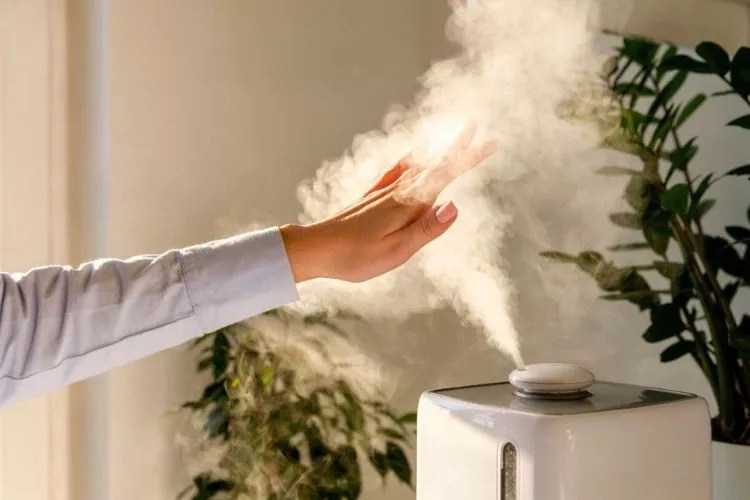
Recommended essential oils to use with a diffuser as a humidifier for plants
When using a diffuser as a plant humidifier, you can also take advantage of essential oils to provide additional benefits.
Certain essential oils have antifungal properties, which can help protect your plants from various diseases. Some recommended essential oils for this purpose include:
- Tea tree oil: Known for its antifungal and antimicrobial properties, it can help prevent and treat fungal infections in plants.
- Eucalyptus oil: Eucalyptus oil has antifungal properties and can help deter pests, making it a useful addition to your plant care routine.
- Lavender oil: Lavender oil can aid in repelling pests and promoting healthy plant growth due to its antifungal and insecticidal properties.
- Peppermint oil: With its insect-repelling and antifungal characteristics, it can help safeguard your plants against pests and diseases.
Remember that essential oils should be used sparingly, as they can be potent and may cause harm to your plants if used excessively.
How to clean a diffuser after use as a humidifier for plants
Maintaining the efficiency of your diffuser and providing a healthy atmosphere for your plants requires regular cleaning of the diffuser. Here are some guidelines to follow when cleaning your diffuser:
- Disconnect the diffuser from the power source and empty any remaining water from the container.
- Create a cleaning mixture by combining a few drops of gentle dish detergent with lukewarm water.
- Moisten a soft cloth or sponge with the soapy solution and carefully clean the diffuser’s inside and outside.
- Employ a cotton swab or tiny brush to reach and clean difficult-to-access areas, such as the ultrasonic plate or mist nozzle.
- Wash the diffuser meticulously with fresh water, removing all traces of soap residue.
- Let the diffuser air dry entirely before refilling it with water and essential oils.
Factors Affecting Humidity Levels for Plants
Managing the intricate aspects of plant humidity levels may seem daunting, but it is crucial for the well-being and development of your indoor plants.
In this segment, we’ll explore the ideal humidity levels, examine the factors that influence humidity, and provide guidance on maintaining the perfect humidity levels for your plants.
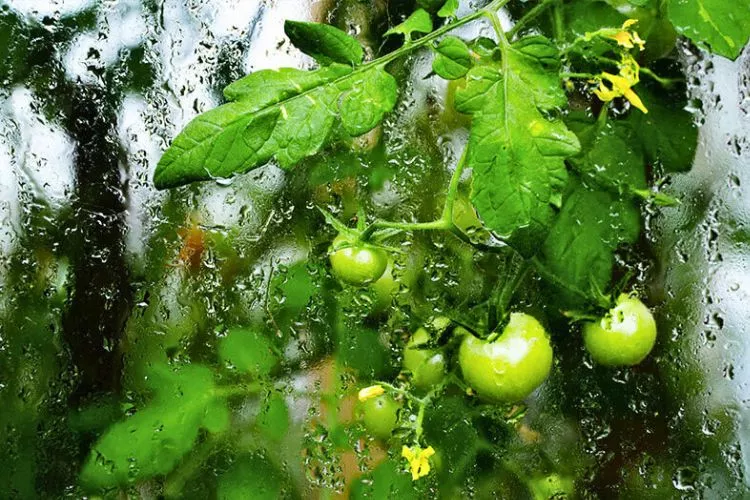
Optimal Humidity Levels for Plants
Ideal humidity range for different types of plants
Plants have varying humidity requirements depending on their natural habitat and individual needs. For instance, tropical plants, such as ferns and orchids, thrive in high humidity levels of around 60-80%.
In contrast, desert plants prefer lower humidity levels, between 10-30%, like cacti and succulents. Researching the specific needs of your plants will ensure they receive the optimal humidity levels for their well-being.
Effects of high and low humidity on plants
High humidity can lead to mold, rot, and fungal diseases, while low humidity can cause plants to dry out, stunt growth, and reduce their ability to absorb nutrients. Striking a balance between too high and too low is crucial for maintaining a healthy indoor garden.
Factors That Affect Humidity Levels
Temperature
Higher temperatures can cause water to evaporate more rapidly, decreasing humidity levels. Conversely, lower temperatures can increase humidity levels by reducing evaporation rates.
Monitoring and adjusting the temperature in your plant’s environment can help maintain ideal humidity levels.
Airflow
Air circulation can impact humidity levels, as moving air helps distribute moisture evenly. However, excessive airflow, such as from vents or heaters, can lead to dry air and lower humidity levels.
Be mindful of where you place your plants and the airflow in their environment.
Watering practices
Overwatering can lead to high humidity levels, while underwatering can result in low humidity. Adjusting your watering practices to match the needs of your plants can help maintain proper humidity levels.
Tips for Maintaining Ideal Humidity Levels for Plants
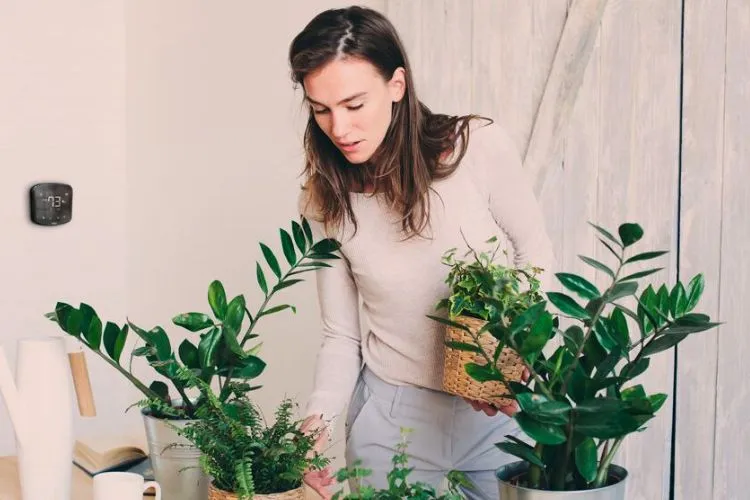
Use a hygrometer to monitor humidity levels
A hygrometer is essential for evaluating humidity levels in your plants’ environment. Hygrometers operate by quantifying the moisture content in the air, offering you the relative humidity as a percentage.
Various hygrometers exist, but digital hygrometers are the most prevalent for indoor applications. These gadgets employ sensors to identify fluctuations in the air’s moisture levels and exhibit the humidity measurements on a user-friendly display.
You can make educated decisions regarding the adjustments required to sustain ideal levels by routinely checking humidity.
Group plants with similar humidity requirements
Grouping plants with similar humidity requirements can simplify the management of their surroundings and ensure they receive the proper moisture levels.
Mist plants regularly
Spraying your plants with water can help raise humidity levels, especially for tropical plants that thrive in higher humidity conditions.
Use a humidifier or diffuser
Utilizing a humidifier or diffuser can help maintain optimal humidity levels for your plants, especially in dry environments or during winter when indoor air is drier.
Frequently Asked Questions (fAQs)
Can a diffuser replace a humidifier for my plants?
A diffuser can provide some humidity for plants with low requirements or in small spaces, but it’s not as effective as a dedicated humidifier for plants needing higher humidity levels.
Do all plants require the same level of humidity?
Different plants have varying humidity requirements depending on their natural habitat and species.
Can excessive humidity harm plants?
Excessive humidity can harm plants by encouraging mold and fungal growth, and reducing transpiration, leading to weaker plants and potential disease.
Conclusion:
In conclusion, while diffusers can provide some humidity for plants with low requirements or in small spaces, they aren’t as effective as dedicated humidifiers for plants with higher needs.
To maintain healthy plants, monitor humidity levels using a hygrometer, group plants with similar requirements, and mist them regularly.
We hope that this guide has been helpful. You can read about similar topics here on our website. Check back again soon for more.


